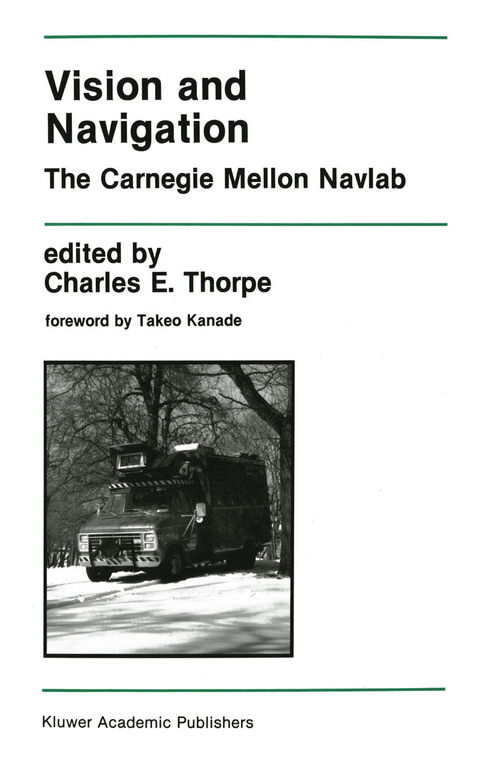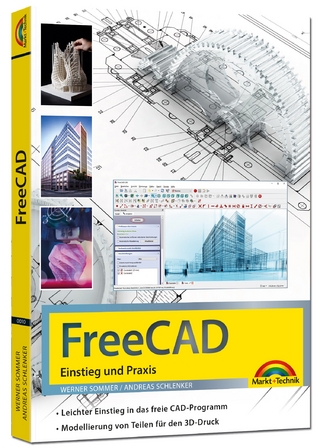
Vision and Navigation
Springer (Verlag)
978-0-7923-9068-8 (ISBN)
1. Introduction.- 1.1. Mobile Robots.- 1.2. Overview.- 1.3. Acknowledgments.- 2. Color Vision for Road Following.- 2.1. Introduction.- 2.2. SCARF.- 2.3. UNSCARF.- 2.4. Results and Conclusions.- 2.5. References.- 3. Explicit Models for Robot Road Following.- 3.1 Implicit Models Considered Harmful.- 3.2 Systems, Models, and Assumptions.- 3.3 FERMI.- 3.4 References.- 4. An Approach to Knowledge-Based Interpretation of Outdoor Natural Color Road Scenes.- 4.1. Abstract.- 4.2. Introduction.- 4.3. Related Work.- 4.4. Adjustable Explicit Scene Models and the Interpretation Cycle.- 4.5. System Overview.- 4.6. Results of the Road Scene Interpretation.- 4.7. The Road Scene Interpretation System in Detail.- 4.8. Future Work.- 4.9. Conclusion.- 4.10. Acknowledgement.- 4.11. References.- 5. Neural Network Based Autonomous Navigation.- 5.1. Introduction.- 5.2. Network Architecture.- 5.3. Training And Performance.- 5.4. Network Representation.- 5.5. Discussion And Extensions.- 5.6. Conclusion.- 5.7. References.- 6. Car Recognition for the CMU Navlab.- 6.1 Introduction.- 6.2 Related work.- 6.3 The LASSIE object recognition program.- 6.4 Results.- 6.5 Directions for future work.- 6.6 Summary.- 6.7 References.- 7. Building and Navigating Maps of Road Scenes Using Active Range and Reflectance Data.- 7.1. Introduction.- 7.2. Following roads using active reflectance images.- 7.3. Building maps from range and reflectance images.- 7.4. Map-based road following.- 7.5. Conclusion.- 7.6. References.- 8. 3-D Vision Techniques for Autonomous Vehicles.- 8.1. Introduction.- 8.2. Active range and reflectance sensing.- 8.3. Terrain representations.- 8.4. Combining multiple terrain maps.- 8.5. Combining range and intensity data.- 8.6. Conclusion.- 8.7. References.- 9. The CODGER System for Mobile RobotNavigation.- 9.1 Introduction.- 9.2 Overview of the CODGER System.- 9.3 Data Storage and Transfer.- 9.4 Geometric Representation and Reasoning.- 9.5 Conclusions.- 9.6 References.- 10. The Driving Pipeline: A Driving Control Scheme for Mobile Robots.- 10.1 Introduction.- 10.2 Processing Steps and Driving Unit.- 10.3 Continuous Motion, Adaptive Control, and the Driving Pipeline.- 10.4 The Driving Pipeline in Action: Experimental Results.- 10.5 Conclusion.- 10.6 References.- 11. Multi-Resolution Constraint Modeling for Mobile Robot Planning.- 11.1 Introduction.- 11.2 The Local Navigation Problem.- 11.3 Finding Trajectories.- 11.4 Experiments.- 11.5 Conclusions.- 11.6 Acknowledgements.- 11.7 References.- 12. Navlab: An Autonomous Navigation Testbed.- 12.1 Introduction.- 12.2 Controller.- 12.3 Vehicle Shell.- 12.4 Locomotion.- 12.5 Electrical System.- 12.6 Telemetry.- 12.7 Perceptive Sensing and Computing.- 12.8 Conclusion.- 13. Vehicle and Path Models for Autonomous Navigation.- 13.1 Introduction.- 13.2 Vehicle Representation.- 13.3 Path Representation.- 13.4 Path Tracking.- 13.5 Results.- 13.6 Conclusions.- 13.7 References.- 14. The Warp Machine on Navlab.- 14.1 Introduction.- 14.2 History of the Warp Machine on Navlab.- 14.3 FIDO.- 14.4 SCARF.- 14.5 ALVINN.- 14.6 Evaluation of the Warp Machine on Navlab.- 14.7 Conclusions.- 14.8 References.- 15. Outdoor Visual Navigation for Autonomous Robots.- 15.1 Introduction.- 15.2 Example Systems.- 15.3 Discussion and Conclusions.- 15.4 Acknowledgements.- 15.5 References.
| Erscheint lt. Verlag | 30.4.1990 |
|---|---|
| Reihe/Serie | The Springer International Series in Engineering and Computer Science ; 93 |
| Zusatzinfo | XIV, 370 p. |
| Verlagsort | Dordrecht |
| Sprache | englisch |
| Maße | 156 x 234 mm |
| Themenwelt | Informatik ► Grafik / Design ► Digitale Bildverarbeitung |
| Informatik ► Theorie / Studium ► Künstliche Intelligenz / Robotik | |
| Technik ► Elektrotechnik / Energietechnik | |
| ISBN-10 | 0-7923-9068-7 / 0792390687 |
| ISBN-13 | 978-0-7923-9068-8 / 9780792390688 |
| Zustand | Neuware |
| Informationen gemäß Produktsicherheitsverordnung (GPSR) | |
| Haben Sie eine Frage zum Produkt? |
aus dem Bereich


